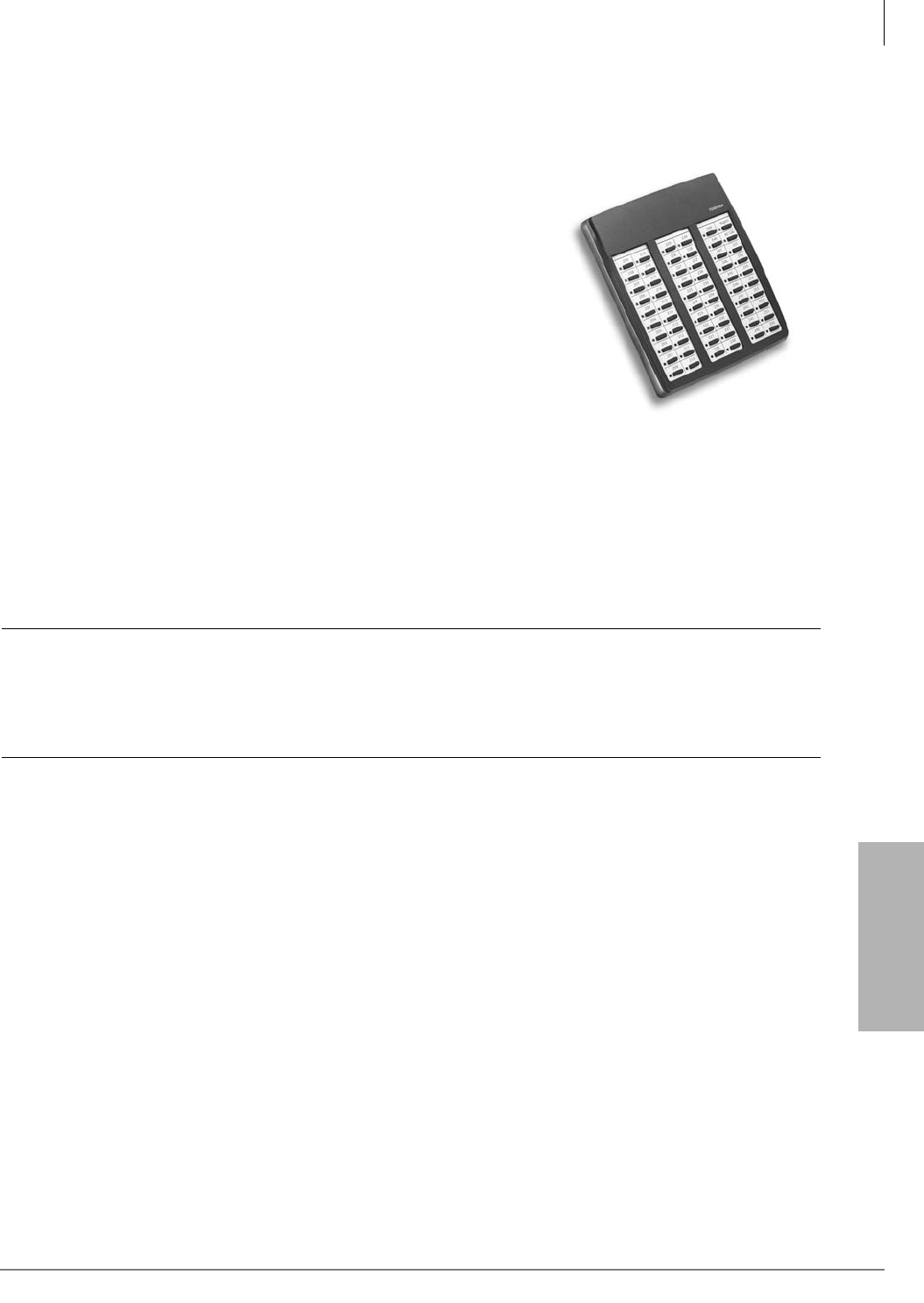
Station Apparatus
Direct Station Selection (DSS) Console/System Connection
Strata CTX I&M 06/04 11-29
Station Apparatus
Direct Station Selection (DSS) Console/System
Connection
The DSS console can be connected to a BDKU/BKDS or
PDKU on any circuit. DSS consoles are associated with
digital telephones via system programming. This section
provides instructions on how to install the consoles.
DSS Console Connections
DSS consoles are connected to BDKU/BDKS or PDKU
PCBs using standard twisted single-pair or two-pair jacketed
telephone cable (maximum 1000 feet, 303
meters) is used for
the connection.
To accommodate the DSS console connection, the
instrument end of the cable should be terminated in a
modular station connector block (RJ11). Refer to Chapter 10
– MDF PCB Wiring for wiring/interconnecting details.
Notes
● DSS console cable runs must not have cable splits (single or double), cable bridges (of any
length) or high resistance or faulty cable splices.
● See the appropriate Installation chapter for secondary protection information and loop limits.
CAUTION! When installing the DDSS cable, do not run the cables parallel if they are
within three feet of an AC power line. AC power lines should be crossed at
right (90
°
) angles only. In particular, avoid running station wire pairs near
devices that generate electrical noise, such as neon or fluorescent light
fixtures.
Standard Telephones
This section explains how to connect standard telephones to the Strata CTX670 system. Toshiba
does not provide standard telephones. Whenever standard telephones are mentioned in this
manual, it refers to 500- and 2500-type standard telephones.
Note Before proceeding, see warning and caution notes in “3000-series Telephone Installation”
on page 11-2.
Standard telephones connect to circuits on the Standard Telephone Interface PCBs: RSTU,
RSTU2, RDSU/RSTS and PSTU via the MDF with standard twisted-pair jacketed telephone
cable. (See single-pair wiring in Chapter 10 – MDF PCB Wiring for more details.)
The standard telephone cable’s overall loop resistance, connected on- or off-premises, is 300 ohms
max. for PSTU; 600 ohms for RSTU and RDSU/RSTS with -24VDC (no R48S), and 1200 ohms
for RSTU and RDSU/RSTS with -48VDC (R48S installed on RSTU, RSTU2, or RDSU PCB),
including telephone resistance. This applies to all devices connected to standard telephone circuits.
A standard telephone connected off-premises via the telephone network should interface with
OL13A, OL13B, or OL13C lines (or equivalent) and connect to an RJ21X, FIC jack or equivalent.
5842
